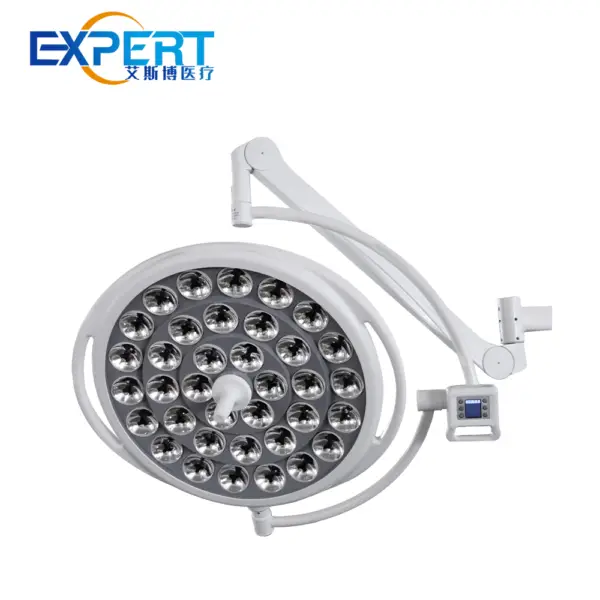Adresse
304, rue Cardinal Nord
Centre Dorchester, MA 02124
Heures de travail
Du lundi au vendredi : 7h - 19h
Week-end : 10h - 17h

In the realm of modern dentistry, technological advancements continue to revolutionize patient care. One such innovation that stands out is the dental surgical lamp. These specialized lights not only enhance visibility during procedures but also contribute significantly to overall treatment outcomes and patient comfort.
Dental surgical lamps play a crucial role in enhancing the quality and precision of dental procedures. By providing focused and intense illumination directly into the oral cavity, these lamps enable dentists to perform intricate tasks with greater accuracy. This is particularly beneficial in procedures such as root canal treatments, crown placements, and complex extractions where precise visibility is paramount.
The primary advantage of dental surgical lamps is their ability to provide clear, shadow-free illumination of the operative field. This ensures that dentists can distinguish between subtle variations in tooth structure, detect cracks or fissures more easily, and perform delicate maneuvers with confidence. Improved visibility leads to more accurate treatment outcomes and reduces the risk of errors during procedures.
Traditional overhead lighting in dental offices often fails to provide adequate illumination, leading to eye strain and fatigue among dental professionals. In contrast, modern dental surgical lamps are designed to emit bright, white light that closely resembles natural daylight. This not only reduces eye strain but also enhances visibility without causing glare, allowing dentists to work comfortably for extended periods.
LED (Light Emitting Diode) dental surgical lamps have gained popularity in recent years due to their numerous advantages over traditional lighting sources. LED lamps offer superior energy efficiency, consuming significantly less power while producing brighter and more consistent light output. They also have a longer lifespan, typically lasting tens of thousands of hours before requiring replacement. Moreover, LED lamps can be adjusted to emit different color temperatures, ranging from warm to cool light, which is beneficial for enhancing tissue contrast during procedures.
Although less common in modern dental practices, halogen lamps have historically been used for their bright and intense illumination. Halogen bulbs produce a focused beam of light that is suitable for illuminating small areas with precision. However, they generate more heat compared to LED lamps and are less energy-efficient. As a result, many dental offices are transitioning to LED technology for its superior performance and environmental benefits.









The focused illumination provided by dental surgical lamps significantly enhances the dentist’s ability to visualize and manipulate oral structures. By minimizing shadows and providing consistent light distribution, these lamps improve the accuracy of dental procedures such as cavity preparations, periodontal surgeries, and implant placements. Dentists can achieve better clinical outcomes and reduce the need for additional corrections or revisions post-treatment.
Modern dental lamps are not only optimized for light quality but also for ergonomic comfort. They are designed with adjustable arms and light heads that can be easily maneuvered into various positions, ensuring optimal positioning during procedures. This ergonomic flexibility reduces strain on the dentist’s neck and shoulders, allowing for better posture and reducing the risk of musculoskeletal injuries over time. Some advanced models even incorporate touch-sensitive controls or wireless operation, further enhancing usability and convenience in the dental operatory.
When selecting a dental surgical lamp for a practice, several key features should be carefully evaluated:
A study conducted at Dental Clinic demonstrated a 30% reduction in procedure time with the adoption of advanced LED surgical lamps. The enhanced visibility and ergonomic design of the lamps allowed dentists to work more efficiently, resulting in shorter appointment times and improved patient throughput.
Patient feedback at Dental Clinic highlighted a noticeable increase in comfort during procedures performed under brighter and more focused lighting conditions. Patients reported feeling more at ease and less anxious, contributing to a positive overall experience and improved patient satisfaction scores.

In an era of digital dentistry, the compatibility of dental surgical lamps with digital imaging systems and other advanced technologies is crucial. Many modern lamps are designed to integrate seamlessly with intraoral cameras, digital radiography units, and computer-aided design/computer-aided manufacturing (CAD/CAM) systems. This integration enhances diagnostic capabilities, facilitates real-time image visualization during procedures, and supports precise treatment planning and execution.
L'évolution de dental surgical lamps represents a significant advancement in dental care, benefiting both practitioners and patients alike. With improved visibility, reduced strain on dental professionals, and enhanced precision in procedures, these lights have become indispensable tools in modern dental practices. By choosing the right dental surgical lamp based on specific clinical needs and technological preferences, dental professionals can optimize workflow efficiency, improve treatment outcomes, and elevate the overall patient experience.
Q: Are LED dental surgical lamps more expensive than halogen lamps?
A: Initially, LED lamps may have a higher upfront cost due to their advanced technology and energy efficiency. However, they offer long-term savings through reduced energy consumption and lower maintenance costs, making them a cost-effective investment for dental practices.
Q: How do dental surgical lamps contribute to infection control?
A: Many modern dental surgical lamps are designed for easy cleaning and sterilization, with smooth surfaces and sealed components that minimize the risk of bacterial contamination. Routine sterilization protocols can be safely applied to maintain a hygienic environment in the dental operatory.
Q : Peut-on dental surgical lamps be adjusted for different types of dental procedures?
A: Yes, most modern dental surgical lamps feature adjustable settings for light intensity and color temperature. Dentists can customize the lighting conditions according to the specific requirements of different procedures, such as restorative dentistry, endodontics, oral surgery, and cosmetic treatments.
